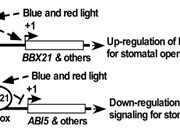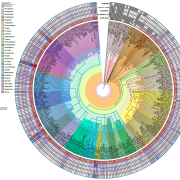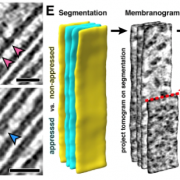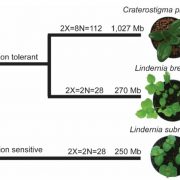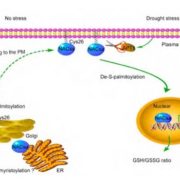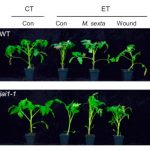Expression atlas of Selaginella moellendorffii provides insights into the evolution of vasculature, secondary metabolism, and roots (Plant Cell)
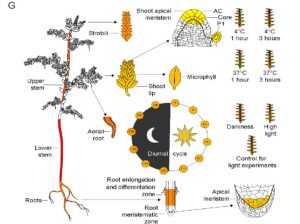 Lycophytes, including the model species Selaginella moellendorffii, are extant (still alive today) seedless vascular plants that were particularly abundant around 400-300 million years ago (and major contributors to the formation of coal). To further understand the biology of some of these oldest extant vascular plants, Ferrari et al. generated a comprehensive RNA sequencing-based expression atlas, and used it to reveal the predicted functional gene modules involved in the biosynthesis of lignified cell walls and various secondary metabolites. One key finding is that genes involved in lignocellulose and cell wall production are very similar to those in Arabidopsis and Brachypodium, suggesting that it is largely unchanged across 400 million years. Interestingly, unlike Arabidopsis, Selaginella uses the same gene module for primary and secondary wall biosynthesis. Another interesting finding is that the root transcriptome is conserved across vascular plants, in spite of evidence suggesting multiple evolutionary origins of roots. (Summary by Mary Williams) Plant Cell 10.1105/tpc.19.00780
Lycophytes, including the model species Selaginella moellendorffii, are extant (still alive today) seedless vascular plants that were particularly abundant around 400-300 million years ago (and major contributors to the formation of coal). To further understand the biology of some of these oldest extant vascular plants, Ferrari et al. generated a comprehensive RNA sequencing-based expression atlas, and used it to reveal the predicted functional gene modules involved in the biosynthesis of lignified cell walls and various secondary metabolites. One key finding is that genes involved in lignocellulose and cell wall production are very similar to those in Arabidopsis and Brachypodium, suggesting that it is largely unchanged across 400 million years. Interestingly, unlike Arabidopsis, Selaginella uses the same gene module for primary and secondary wall biosynthesis. Another interesting finding is that the root transcriptome is conserved across vascular plants, in spite of evidence suggesting multiple evolutionary origins of roots. (Summary by Mary Williams) Plant Cell 10.1105/tpc.19.00780


